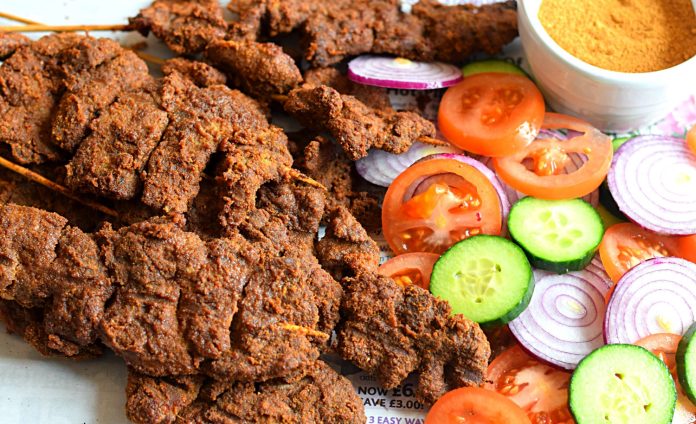A food scientist, Chibuike Benjamin, has described suya as a meal with nutritional properties important to the human body.
Suya or tsire is traditional smoked spiced meat skewer which originates in Hausa Land, Northern Nigeria; and is a popular food item across West Africa. Suya is a large part of Hausa culture and food and is traditionally prepared and made by Hausa men called ‘Mai suya‘.
According to Banjamin, “Studies have shown that the beef or lamb from which suya is made contains nutritional properties such as vitamin B12, zinc, selenium, iron, manganese, magnesium, and phosphorus. Suya is also high in sodium and calories.
“The zinc nutrient helps the body to restore damaged tissue and promotes a healthy immune system. Suya also contains iron, and vitamins B12 and B6, which all play an important role in keeping your immune system in good health,” he noted.
The delicacy is often sold at joints, pubs, and pleasure spots, particularly at night.
beef or lamb from which suya is made contains nutritional properties such as vitamin B12, zinc, selenium, iron, manganese, magnesium, and phosphorus
Explaining the process of making suya, a seller, Bashir, said, “In the morning, we purchase the beef from the market. It is obtained from cows and the meat is washed once or twice. We then cut it into long slices and spread it out. You have to ensure that the meat is laid out flat.
“The meat is then roasted on the grill when it is red hot and oil is regularly used to brush the grill rack and the meat is regularly turned as it gets done. This makes the meat soft and tender.
“So, before customers start thronging the spot, you will finely cut the meat, thread them onto sticks, grill them and set them aside to await customers and reheat them in the flame as you select.”
Experts however warn against eating suya that is made with contaminsted meat.
Major unhygienic source of contamination
A 2016 study conducted by researchers in the Department of Food Engineering at the University of Ilorin, published in the Ukrainian Journal of Food Science, identified the packaging of suya meat with newspapers as a major unhygienic source of contamination.
“The processors have been accustomed to collecting old newspapers from different homes and using the same to package suya for their customers, which are considered to be dirty and dusty, also in some homes where chemicals are used to control insects like cockroaches and mosquitoes.
“There is a tendency of the chemicals being sprayed on the newspapers, which the chemicals, when in contact with the meat and the meat and is eaten, it can pose serious health issues.
“Besides, the printed ink on the papers contains pigments, colourants, binders, additives, and photoinitiators, which can be harmful to the health of the consumers,” the study explained.


